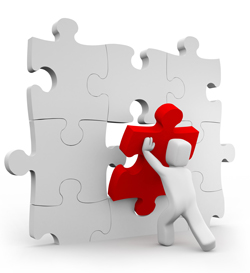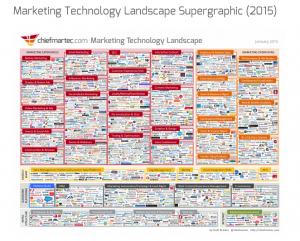 If you are in the process of reorganizing your marketing department or a specific function/division within it (e.g. Content or Digital) understand that there isn’t a one size fits all approach. But, an efficient and successful organization always boils down to two things: culture and governance. Culture and governance are often interrelated in that process improvements can help drive changes in attitudes and behavior. But culture can also be the biggest challenge to overcome despite good intentions.
If you are in the process of reorganizing your marketing department or a specific function/division within it (e.g. Content or Digital) understand that there isn’t a one size fits all approach. But, an efficient and successful organization always boils down to two things: culture and governance. Culture and governance are often interrelated in that process improvements can help drive changes in attitudes and behavior. But culture can also be the biggest challenge to overcome despite good intentions.
Culture is a way of thinking and living with a set of shared beliefs among a group. In marketing the state of culture has a direct impact on customer experience and revenue which can be positive or negative. An unhealthy collective mindset within your organization can be diagnosed and treated if you look at things symptomatically. Use the table below as a quick health check on your organization to see where you fit and what you can do to improve.

Ownership to Leadership
It is time to remove the “owners” from marketing org charts. Instead, promote an environment that is leadership oriented. To own is to possess and to lead is to guide and direct. Simply removing the word from the terminology will begin to soften the political tone and tug of war over digital and social real estate. Also owner is too singularly focused – multiple people can contribute leadership however.
Dueling Metrics to Shared KPIs
This should sound like a familiar scenario. Meet Joe. His job performance is measured by the quality of the leads he generates for Sales. As a result he gates any piece of content he can with extremely long forms to fill out. He’s happy with the small percent that converted because he has deep information on them. His colleague Amy is measured on content reach but isn’t seeing the levels she needs because of lower conversion rates due to the lengthy form. The moral of the story is there has to be some cross-functional team KPIs. Group success will boost future collaboration because teams can begin to share in their achievements.
Siloes to Workflows
It isn’t realistic to think that siloes will magically go away – even despite your best efforts. Instead become a workflow expert. Before you put pen to paper on a new org chart, map out your current state. In some cases this is best done through internal interviews conducted by a trusted vendor – especially if you are bandwidth constrained or dealing with a shaky political climate. An outsider tends to foster an honest and open dialogue as well. Next, create a matrix and capture the following for each functional area you lead and/or interact with:
- Objectives
- Roles/tasks
- Works with
- Measured by
- Challenges/pain points
- Successes
- Etc.
Once your current state is mapped out you’ll have a holistic view and you’ll uncover areas of excellence to leverage and inefficiencies to improve. Based on your new organizational identity and objectives you can begin to lay out your desired state.
Legacy to Agility
If your hands have historically been tied by Enterprise IT, now is the time to forage a new strategic partnership. The Consumerization and Digitalization of IT movement is to your benefit. Many IT shops are faced with the fact that marketing spend is driving technology investments and their success metrics are changing to align with yours. They too are transforming their organizational model to become more agile. You can step out of “Shadow IT” and better integrate your efforts. Collaborate on the best fit marketing automation technologies, eCommerce functionality, multi-channel delivery, mobile strategies, data insights, etc. with them. Create a MarketingOps workstream that runs underneath all initiatives to coordinate and manage activities.
Shiny Penny to Best Fit
And speaking of evaluating marketing technologies, below is the 2015 Marketing Landscape courtesy of chiefmartec.com. Yikes! There will be no shortage of new tools and platforms over the next few years.
Avoid being reactionary and demoing vendors blindly. Start with listing out initiatives that will pay off your objectives and prioritize. Work with IT in a pragmatic manner to gather requirements and then evaluate a short list based on the best fit.
Driving culture change can be one of the most difficult areas to tackle and it won’t happen overnight. How to start? Boil down your top issues into a list and then work on them systematically. It doesn’t have to be fancy you can create a grid like I have at the beginning of this post. When your teams begin to work towards a set of shared beliefs both the attitudes and supporting processes will improve and the ultimate winner will be the customer.
I have been through business transformation before and know firsthand how important the right culture is. Any tales from the front or lessons learned to share?

Senior Consultant
Jenny is a digital content strategist, who leads customer-centric engagements that focus on understanding B2B buying behaviors and developing custom roadmaps.
Her expertise is creating buyer personas and mapping digital content journeys to assess the multi-channel user experience. She helps clients operationalize plans across workstreams and identifies processes to create efficiencies in marketing operations. Jenny also has extensive time under her belt developing and managing customer advocacy programs and community building.
She has helped a diverse group of organizations including Cisco, VMware, Verizon, Microsoft, Dell, BMO Harris, Capital One and many others become more customer-centric.

